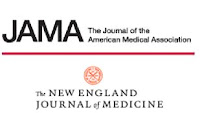A couple of articles recognizing the importance of cultural factors in the healthcare space recently caught our attention. The authors break no new ground but we’re reporting these articles because they appeared in a couple of the U.S.’s most prestigious medical journals.
We begin with an opinion piece in The Journal of the American Medical Association (JAMA).* The authors’ focus is on clinician burnout (which we discussed on Nov. 6, 2019) but they cite earlier work on the importance of quality and culture in the healthcare workplace, including “the culture changes needed for effective teamwork and optimizing the authentic voice of every team member. . . . [and examining] the consequences of medical hierarchy and inequity.”
One of the references in the JAMA piece is an earlier article by two of the authors in The New England Journal of Medicine.** This article discusses how the National Academy of Medicine (NAM) and its predecessor entities have influenced the trajectory of the discussion of healthcare effectiveness, starting by documenting the wide scope of inappropriate care prescribed to patients, i.e., the overuse of ineffective medical practices. Their seminal 1999 report, “To Err Is Human,” estimated that 44,000 to 98,000 Americans die in hospitals each year because of medical errors.
Their 2001 report, “Crossing the Quality Chasm,” defined a framework for healthcare quality with six dimensions: safety, effectiveness, patient-centeredness, timeliness, efficiency, and equity. In practice, the quality of healthcare services has improved since then in several specific areas, e.g., reduced rates of acquired infections, but “wholesale, systemic improvement in quality of care has proven difficult to bring to scale.” We wrote about the lack of progress on Nov. 9, 1920. One significant ongoing problem is that efforts to increase provider accountability, e.g., ascertaining if providers are delivering appropriate care, has resulted in a negative impact on clinicians’ morale. “The United States has yet to find for health care the wisest balance between accountability, which is critical, and supports for a trusting culture of growth and learning, which, as the NAM asserts, is the essential foundation for continual improvement.”
Our Perspective
None of this information is new. What is worth noting is how cultural aspects have become important topics for discussion at the highest levels of healthcare policy.
If you have been following our healthcare posts on Safetymatters, you know we have discussed the challenges and the progress, or lack thereof, in reducing errors and increasing effectiveness. We have emphasized the role of a strong safety culture in the delivery of high quality services. Click on the healthcare label to see all of our related posts.
Healthcare has a long way to go to catch up with other industries that have integrated high levels of safety and quality into their daily operations. To illustrate healthcare’s current position, we will repurpose a recent McKinsey article on corporate ESG (Environment, Social, Governance) attributes.*** McKinsey uses a 3-category framework (Minimum, Common, and Next level practices) to describe a business’s ESG character. For our purposes, we will replace ESG with safety and quality (S&C), and excerpt and adapt specific attributes that could and should exist in a healthcare organization.
Minimum practices – focus on risk mitigation and do no harm measures
• React to external social-legal-political trends
• Address obvious vulnerabilities
• Meet baseline standards
• Pledge to minimal commitment levels
Common practices – substantive efforts, more proactive than reactive
• Track major trends and develop strategies to address them
• Identify strengths and use them to move toward S&C goals
• Comply with voluntary standards and perform above average
• Engage with stakeholder groups to understand what matters to them
Next level practices – full integration of S&C into strategy and operations
• View S&C as essential components of overall strategy
• Link clearly articulated leadership areas with S&C goals
• Embed S&C in capital and resource allocation
• Tie S&C to employee incentives and evaluations
• Ensure that S&C reports cover the entity’s full set of operations
Our judgment is that most healthcare entities, especially hospitals, demonstrate minimum practices and are trying to get ahead of the curve by implementing some common practices. Some entities may claim to be using next level practices, but these are generally narrow or limited efforts. The industry’s biggest challenge is getting the entrenched guilds of doctors and nurses, accustomed to working in protective silos, to fully embrace increased accountability. At the same time, senior management must create, maintain, and manage a non-punitive work environment and a just culture.
* Rotenstein, L.S., Berwick, D.M., and Cassel, C.K., “Addressing Well-being Throughout the Health Care Workforce: The Next Imperative,” JAMA, Vol. 328, No. 6 (Aug. 9, 2022), pp. 521-22. Published online July 18, 2022. JAMA is a peer-reviewed journal published by the American Medical Association.
** Berwick, D.M., and Cassel, C.K., “The NAM and the Quality of Health Care — Inflecting a Field,” The New England Journal of Medicine, Vol. 383, No. 6 (Aug. 6, 2020), pp. 505-08.
*** Pérez, L., Hunt, V., Samandari, H, Nuttall, R., and Bellone, D., “How to make ESG real,” McKinsey Quarterly (Aug. 2022).
